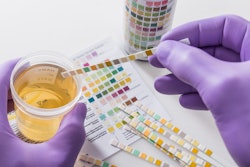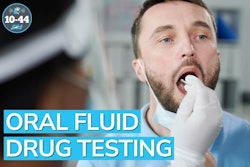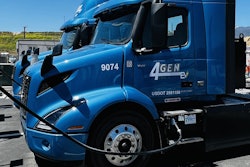Although any case can benefit from early attention, commercial motor vehicle accidents have several critical decision points that present immediately after an accident, and these early opportunities to aid in preparation for the inevitable accidents that demand immediate action.
Rapid response
A full discussion of the intricacies of a “rapid response” – that is, the marshaling of investigatory and expert resources to the scene of the accident to gather and preserve evidence – is beyond the scope of this article. The defense of a claim arising from a truck accident begins well before the accident by careful assembly of a team that can quickly respond to the accident scene to examine and observe the extremely fragile evidence that is informative of how the accident occurred.
Skids marks can be erased by weather and roadway gouges and accident debris are easily disturbed. The Event Data Recorder (EDR) of passenger vehicles and the Electronic Control Module (ECM) data of trucks can be overwritten if action is not taken. And the universe of evidence sources that can be lost with time is ever-expanding; traffic cameras, street-facing security cameras, and Ring doorbells have limited storage capacity. A very early decision is whether an accident creates significant exposure to justify the deployment of the team to the scene. That team potentially can consist of the attorney, investigators, accident reconstruction experts, and expand with bio-mechanical experts, criminal defense attorneys, toxicologists, and mobile communication experts. All should be held at the ready.
Consideration must also be given to whether the circumstances require mandatory alcohol and drug testing of the driver under the Federal Motor Carrier Safety Regulations §382.303. Testing is triggered by a human fatality or a citation to the driver and either an ambulance or a tow from the scene. Alcohol testing must be within two hours with efforts ceasing after eight hours, and drug testing done within 32 hours. If not done, it is of critical importance to document circumstances rendering it impossible to do so.
Dealing with traffic tickets
Many States consider a plea of guilty to a traffic ticket to be an admission of liability to the acts or omissions forming the basis of the citation. See e.g., Eaton v. Eaton, 119 N.J. 628, 575 A. 2d 858 (1990). The driver may see financial sense in pleading guilty and paying a fine rather than appear to contest the charges, especially if the driver lives far from the accident location, unaware of the consequences of the decision or available options. For example, many States allow the driver a “civil reservation” as part of the plea, sealing the plea against use in an ensuing civil litigation. See e.g., New Jersey Municipal Court Rule 7:6-2(a). Therefore, it is advisable to defend a driver involved in a significant accident when any ticket is issued, even if only to obtain a civil reservation.
In addition, savvy lawyers representing parties claiming injuries in the accident will often appear in Court, with and without clients, to argue against the civil reservation. Representation can therefore present an early opportunity for engaging with counsel, gain information, or lay the basis for resolution.
Preventability hearings
Preventability hearings are the motor carrier’s analysis of whether the accident was preventable from the perspective of the driver. The hearings are typically conducted to determine whether action is needed, such as further training in accident prevention and safe driving practices and/or disciplinary measures that may include termination. The hearings usually involve a review of the accident report and other forensic evidence and interview of the driver, all of which results in a binary determination of an accident being “preventable” or “non-preventable”.
It is important to note that that the standard for “preventability” is markedly different from the standard for negligence. For example, compare the Federal Motor Carrier Safety Regulations, 49 C.F.R. §385.3 – “Preventable accident on the part of the motor carrier means an accident (1) that involved a commercial vehicle, and (2) that could have been averted but for an act, or failure to act, by the motor carrier of the driver” - with the typical formulation of negligence as failure to exercise reasonable care under the circumstances. Nevertheless, plaintiffs will seek to use the preventability finding to argue liability.
For example, in Hassan v. Roland Williams, et al, 467 N.J. Super. 190 (App. Div. 2021), the defendant-driver struck plaintiff’s truck in the rear and was terminated following a preventability hearing. The defendant-driver contended that plaintiff’s truck entered the highway from an access ramp cutting off his oncoming truck. The preventability finding was that the driver should have nevertheless left himself an “out," such as ensuring the adjacent lane was unoccupied and available for a lane change. The termination letter said, “This is to advise you that you are hereby discharged due to your recklessness resulting in a serious preventable accident while on duty." Disclosure of the letter led to the deposition of its author on the basis for the termination decision, the company’s safety officer. Unfortunately, questioning elicited responses that tended toward the absolutes that can fuel a “reptile” attack.
There was success at the trial court level in precluding use of the fact of the termination, the termination letter and the results of the investigation. On appeal, the Appellate Division upheld the exclusion of the fact of the driver’s termination as a subsequent remedial measure (since the termination prevented the driver from further accidents). However, the redacted termination letter, the company’s investigation, and the investigation’s conclusions were all deemed admissible as either statements of a party opponent or statements against interest. The Court did not engage in a balancing of the probative value of this evidence against its probative value under F.R.E. 403 (or rather its New Jersey twin, N.J.R.E. 403) since a 403 objection was not made at trial. Despite the fact that the Appellate Court recognized that there is a difference between preventability and negligence, it focused on the preventability finding of recklessness. Although recklessness was not defined in the termination letter, and certainly not used in its legal sense, the Court held the company to the plain meaning of its words.
Cases such as Hassan suggest a high degree of discretion and care in conducting preventability hearing and publishing findings in view of probable litigation, and a role for both the adjuster and counsel in the process. Efforts should, at a minimum, distinguish between the higher standards of preventability versus mere negligence and eschew terms such as “recklessness”, and give consideration to how the factual findings underpinning the preventability determination will be addressed at the inevitable deposition.
Gratuitous defense based on MCS-90 exposure
Finally, the insurer should reach a determination on whether there is coverage as early as possible, then give thought to whether there is exposure in the absence of coverage under the MCS-90 Endorsement of the policy that may require a “gratuitous defense”.
The MCS-90 Endorsement is required for all commercial motor vehicle liability policies issued to motor carriers operating in interstate commerce. See 49 C.F.R. §387.15. It responds to a verdict against the motor carrier for damages for personal injuries only if the policy to which it is attached does not provide coverage. For example, the MCS-90 would be triggered if the policy provides coverage only for specifically identified vehicles or category of vehicle, which does not include the vehicle involved in the accident. The MCS-90 is also implicated by breaches of policy conditions such as failure to give timely notice of the accident or timely notice of the lawsuit or non-cooperation by the insured. See, The MCS-90 Endorsement, Transportation Committee Newsletter, March 2022.
The MCS-90 limits are $750,000.00 for a commercial motor vehicle carrying non-hazardous cargo. There is no duty to defend under the MCS-90. Although payment pursuant to the MCS-90 affords a right of recovery from the insured, an undefended or poorly defended claim can increase the risk of an inflated recovery by plaintiffs. For that reason, consideration must be given to the “gratuitous defense” of the claim notwithstanding the coverage denial.
In summary, a significant truck accident presents an immediate question of a rapid response, followed quickly by issues of the disposition of traffic tickets, findings of preventability hearings, and coverage issues implicating the MCS-90 that arise within the ensuing weeks. More than most accidents, fast action and timely decisions can mitigate damages and maximize prospects for the defense.













